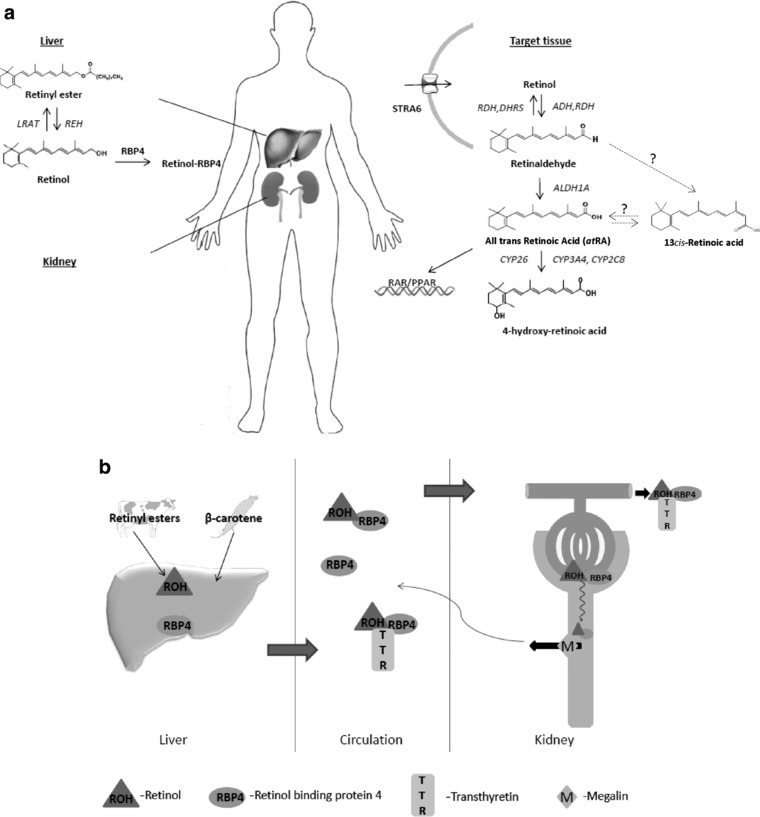Figure 1.

(a) In the liver, the esterification of retinol and the hydrolysis of the stored esters are regulated by lecithin retinol acyltransferase (LRAT) and retinyl ester hydrolase (REH), respectively. Circulating retinol is delivered to target tissues by retinol binding protein 4 (RBP4) and transthyretin (TTR, not shown) and retinol is taken up into target cells by uptake transporter STRA6. In target tissues, retinol is oxidized to retinaldehyde (retinal) by alcohol dehydrogenase (ADH) or retinol dehydrogenase (RDH); retinaldehyde can be reduced back to retinol by RDH and dehydrogenase reductase (DHRS). The formation of all‐trans retinoic acid (atRA) requires irreversible oxidation of retinaldehyde to atRA by aldehyde dehydrogenase 1A (ALDH1A). The clearance of retinoic acid (RA) is mediated predominantly by cytochrome P450 family 26 enzymes (CYP26). The 13cis‐RA is likely formed from retinaldehyde via an unknown intermediate or via isomerization from atRA. (b) The retinol‐RBP4 complex is filtered by the kidneys; the retinol‐RBP4‐TTR complex is too large for filtration. The filtered retinol‐RBP4 complex is reabsorbed in the proximal tubule cells by megalin.
